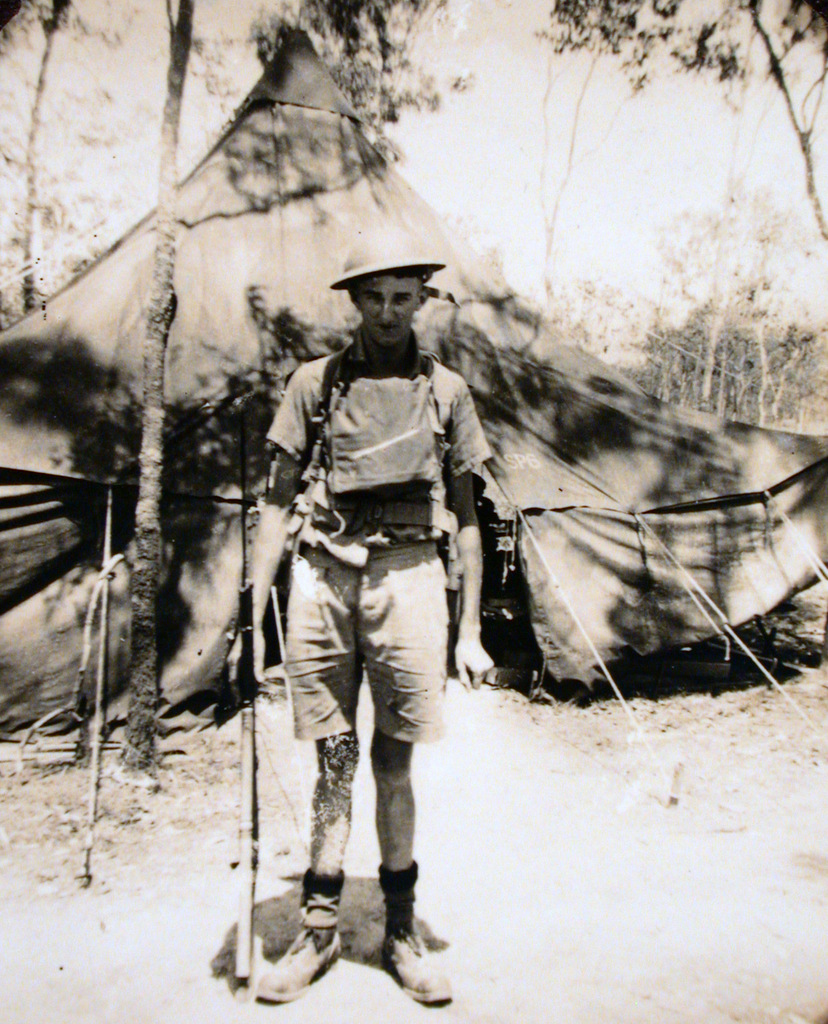 |
| Neil Phelan |
Sepia Saturday's theme photo this week gives us a number of choices but last week I ignored the tent in the theme photo so I decided that this week I would take notice.
In April 1942 Neil Phelan enlisted in the Royal Australian Air Force (RAAF) and worked as an aircraft mechanic in 100 Squadron. After training in Victoria and Townsville in northern Queensland he served Milne Bay in New Guinea and Goodenough in New Britain and Sale in Victoria.
I think this photo may have been taken at Bohle River near Townsville in northern Queensland (judging by the vegetation) because their tents at Milne Bay were pitched among coconut palms. Neil has his gas mask and rifle at the ready. I've heard a lot of his stories over the years and even now, at the age of 91, he visits his local schools occasionally to talk to the children about being in the air force and fighting off the Japanese invasion, and they always have lots of questions for him.
 |
| The red arrow marks the position of Milne Bay. |














